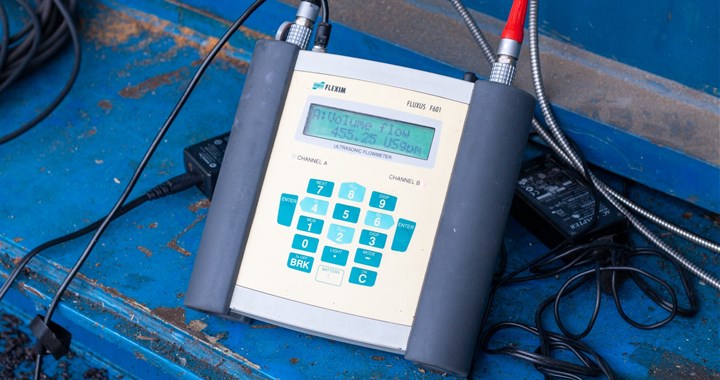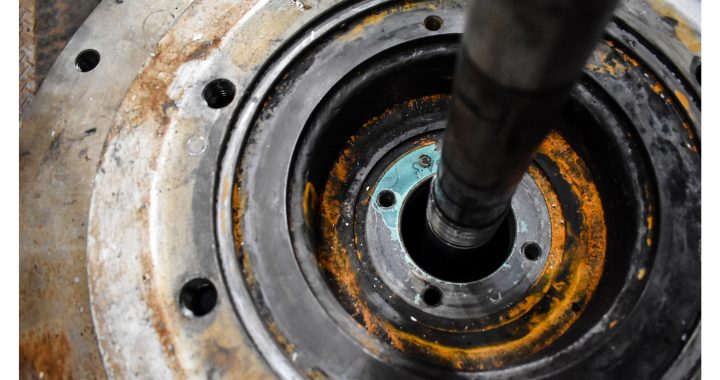A Midwest power utility customer was experiencing increased vibration after a refurbished Condensate pump was reinstalled on-site. They reached out to Hydro Reliability Services to help troubleshoot the vibration issue and determine if it was a problem inherent to the equipment or the result of the refurbishment. Continue reading
Tag Archives: vibration
Re-engineering System Reliability
A US fertilizer plant was experiencing recurring reliability problems with its horizontal multistage boiler feed pumps. The series of repeat failures motivated the owner plant to consult with a widely-known unbiased aftermarket pump service provider. Previous experience with this company’s Texas facility gave the plant confidence that they had the capability to troubleshoot the problem and provide a solution. This type of supplier has been classified as a “CPRS”— Competent Pump Repair Shop, because their worldwide affiliates are staffed by specialists who have the fullest support of pump engineers at the company headquarters.
The aftermarket pump service provider performed a failure modes and effects analysis (FMEA) that took into consideration historical failure information and included an independent engineering analysis of the operating conditions. A review of the system history uncovered that the fertilizer plant had originally been designed with two 100% pumps. When the system was uprated, increased output requirements necessitated that both pumps operate in parallel to meet the new demand. Based on this information, the FMEA determined that the most probable failure mechanism was discharge recirculation caused by low flow operation.
Unearthing the Root Cause of Vibration Issues
A recently constructed fertilizer plant was experiencing significant vibration problems on their brand new UAN Solution pumps. This vibration forced the plant to take the equipment out of service.
The site was unable to diagnose the root cause of this problem on their own and the unreliability and resulting unavailability of this critical equipment was causing significant stress on the new plant. They heard through another fertilizer plant that a global aftermarket pump service provider had been able to diagnose and remediate their pump problems with great success. The site reached out to this aftermarket pump service provider to help identify the issue and provide solutions.
The pump was shipped to the aftermarket pump service provider’s Chicago repair shop to perform a thorough disassembly, cleaning, and inspection (DCI). The service provider’s engineering team reviewed the original pump design and historical vibration information provided by the plant. Between this review and the DCI results, sufficient evidence was gathered to perform a root cause analysis (RCA) that explained the aberrant behavior of the problem pumps. The pumps were then re-engineered to eliminate the diagnosed problem and provide the plant with reliable operation. Continue reading
Full Refurbishment for Island Refinery
The process of reopening the plant had uncovered more than 500 pumps that needed considerable refurbishment and repair. The most important of these was a critical jet pump used for hydraulic decoking. It was badly damaged and sent to the original equipment manufacturer (OEM) for inspection. The OEM recommended that the refinery replace most of the pump parts, as well as a costly repair that would require 35 weeks to rebuild.
Viable alternative
Instead, the refinery sent the pump to global aftermarket pump service provider, Hydro, Inc. in Chicago, where it was refurbished for just over half the cost of the OEM proposal. The time involved was also significantly improved to just eight weeks by using a non-destructive evaluation and rebuild process at a 46,000 ft2 facility where Hydro develops and implements engineering modifications for improving the performance of critical pumps and then verifies that performance in their Hydraulic Institute certified test lab.
Significant reopening
The original refinery opened in the mid-1960s. In the early 1970s, it was re-rated at 650,000 barrels per day. It had been one of the largest refineries in the western hemisphere, so the impact of reopening the plant would be significant. In this case, Hydro was tasked to work with the critical highenergy pump to prepare for its reopening. The new owners began the process two years ago and it is expected that the plant will be open for operation in the first quarter of 2020. Once restarted, the plant will be able to process up to 210,000 barrels per day of oil, a fraction of the 1,500- acre (607-hectare) plant’s peak capacity in the 1970s of 650,000 bpd.
When the plant was shut down, the pumps and other equipment in the refinery were either left in place or went into storage where they were kept in poor condition. Time constraints prohibited proper preventative maintenance before the refinery shut down. The tropical climate is hot, salty, humid, oppressive, and several hurricanes occurred during this time. All of these extreme conditions can contribute to the deterioration of heavy rotating equipment. Over the course of the year, the temperature typically varies from 72°F to 88°F and is rarely below 68°F or above 90°F. Continue reading
Engineering Analysis Resolves Startup Issues at Middle Eastern Plant
 During the commissioning and startup of an alumina processing plant in the Middle East, a significant recurring pump issue was causing delays to the commissioning of the facility. When de-energizing the equipment, the live steam condensate vertical can pumps experienced repeated failures of all installed units. These seizures occurred at both the design fluid temperature and when pumping cold water.
During the commissioning and startup of an alumina processing plant in the Middle East, a significant recurring pump issue was causing delays to the commissioning of the facility. When de-energizing the equipment, the live steam condensate vertical can pumps experienced repeated failures of all installed units. These seizures occurred at both the design fluid temperature and when pumping cold water.
Because this was a new plant in the commissioning phase, the equipment was under warranty. However, negotiations with the OEM were lengthening the challenged startup schedule. There was little insight into the root cause of the equipment failure.
As the repeated failures were affecting the plant commissioning date, the large architect, engineering and construction (AEC) firm in charge of plant commissioning decided to contact an independent, aftermarket service provider located in Dubai, United Arab Emirates, to conduct an assessment to determine the root cause of the pump failures and provide solutions.
Source: https://www.pumpsandsystems.com/engineering-analysis-resolves-startup-issues-middle-eastern-plant





